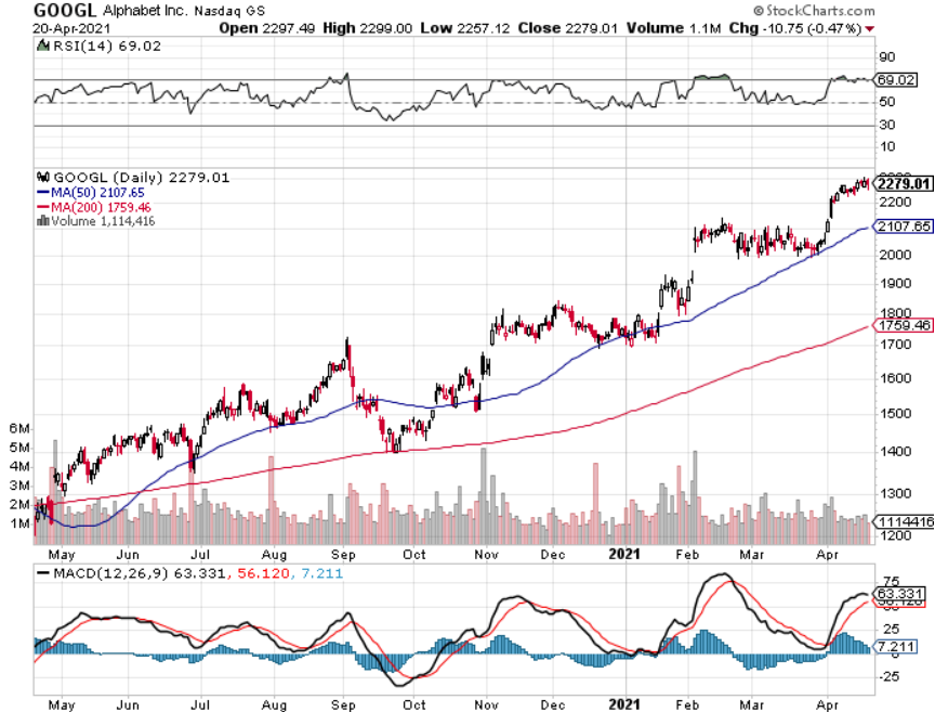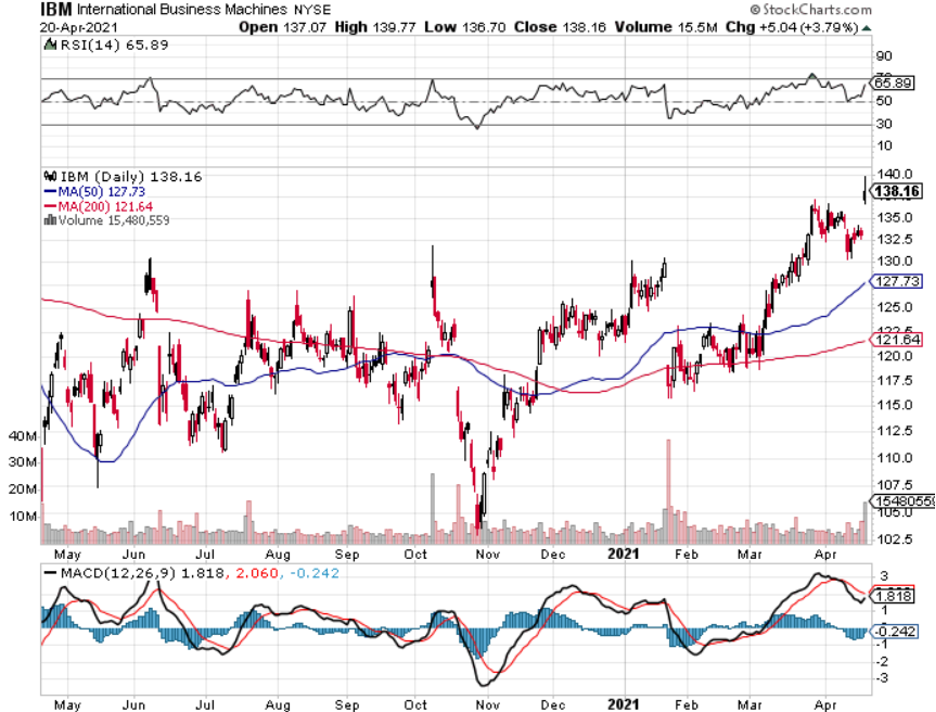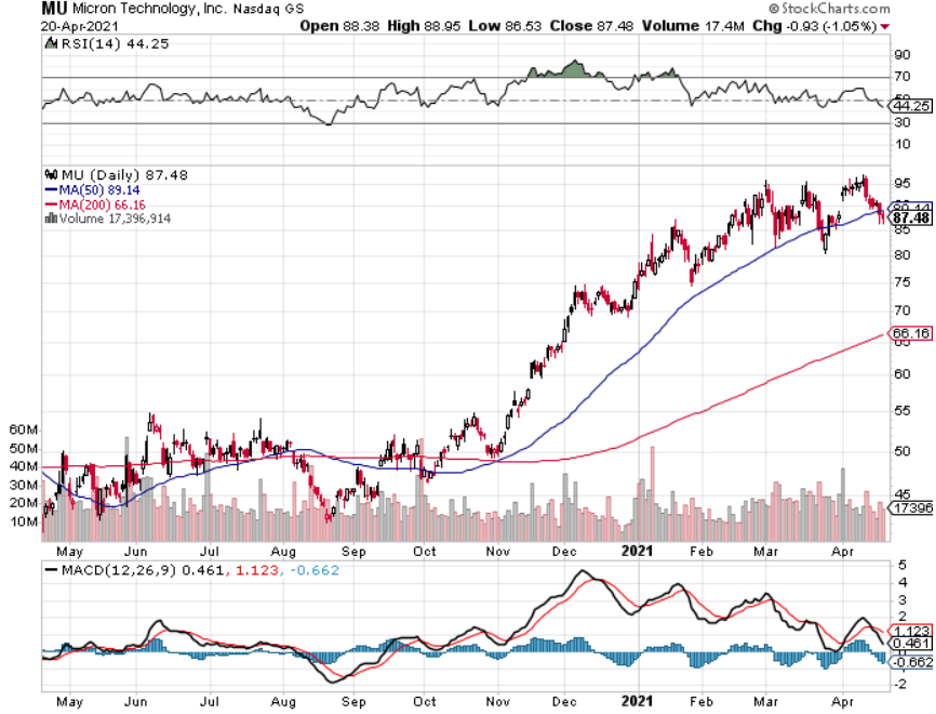We are on the cusp of tech earnings which could either take us on the next leg up or leg down.
Going off of data points that we are getting from around the world, it’s clear that the secular bull market in big technology is as healthy as ever.
A few weeks ago, South Korea’s behemoth Samsung Electronics sounded off when it said first-quarter profit likely rose 44% because of the surge in sales of smartphones and TVs.
The work-from-home economy has made technology stocks the ultimate winner and now we need to assess what will happen to these very stocks in 2021.
Many analysts out there see an ongoing correction in names such as videoconferencing software company Zoom (ZM) which is going through a drawn-out consolidation phase after hyper-growth in their products last year.
That is not a bad thing, but frustrating in the short-term.
Tech stocks are renowned for getting ahead of itself.
Waiting for tech stocks to grow into their valuation is no fun, however, ultimately, there is an avalanche of money piling into this sector because it is fundamentally underpinned by cash cow secular trends.
Part of that thesis also is applied internationally to giants like Samsung, the South Korean technology giant forecast January-March operating profit at $8.32 billion.
Samsung’s flagship Galaxy S21 smartphone series outsold the previous version by a two-to-one margin in the six weeks since its January launch.
Profit in Samsung’s television set and home appliance business also likely more than doubled due to continued stay-at-home demand.
Cross-town TV and home appliance rival LG Electronics announced its largest-ever preliminary quarterly operating profit for January-March.
The secular health is not only confined to Korea, as U.S. memory chip peer Micron Technology last month forecast third-quarter revenue above analyst estimates due to rising demand brought about by a global shift to remote work.
The price of DRAM chips widely used in laptops and other computing devices rose 5.3% in January-March from the previous three months.
Samsung will invest about 10 trillion won in its chip contract manufacturing business this year, compared to about 6 trillion won last year.
In addition to the performance, regulation is now set to offer another helping hand to U.S. tech with two top White House aides hosting a meeting on how to better equip the state of the U.S. supply chain.
Samsung is considering a new $17 billion chip plant in the United States.
On the night before an earnings flurry, we also got word from IBM that they finally reversed 4 years of declining revenue to post 1% revenue growth.
Like many big tech groups, IBM has jumped on the bandwagon of clients digitally transforming their businesses, using hybrid cloud and AI to capture new growth opportunities, increase productivity and create operating flexibility.
Their revenue performance this quarter reflects this. Global business service (GBS) cloud revenue growth accelerated to almost 30%, doubling its growth rate from the prior quarter with strong growth across the portfolio.
The numbers reflect expanding practices with ecosystem partners like Salesforce and Adobe and strong momentum in their acquisition of Red Hat.
IBM has doubled the number of Red Hat client engagements from the prior year to over 150, working with companies such as HBO, Marriott, Vodafone, and Honda.
They’ve now signed $2 billion of business in their Red Hat practice inception to date.
Across these, IBM's cloud revenue was up 18% in the quarter and over the last 12 months and now stands at over $26 billion for the last year.
Like many other tech firms, employment hiring is expanding with IBM hiring thousands of people in the past quarter.
Like other firms as well, M&A is an often-utilized growth strategy with IBM closing on six acquisitions since mid-December.
They are adding go-to-market and delivery capabilities in GBS, and technical skills in Red Hat. And they’re increasing R&D in areas like AI and quantum to drive innovation.
Across cloud and cognitive software, IBM continues to increase subscription and support renewal rates, driving the record deferred income levels.
Red Hat continued solid performance with normalized revenue growth of 15%, led by Red Hat Enterprise Linux and OpenShift, both of which continue to gain share.
Even IBM, the laggard of tech, is improving their balance sheet by whittling down $3 billion from year-end, their debt was down $5 billion. They have now reduced debt by about $17 billion from the peak.
IBM even still delivers shareholders a nice dividend.
The takeaways from IBM and Samsung will largely apply to many of the tech companies that are about to report earnings.
Hiring is up because the business is doing so well.
Even if these legacy operations are only growing minimally in IBM, their cloud operations are far and away the highest growth element in their portfolio, and the performance of Red Hat indicates that.
The secular tailwinds are indeed helped by the business environment undergirded by a work-from-home assumption which is why companies like Samsung are posting record sales in tablets, smartphones, and can’t keep up with the demand for chips.
We are getting indication that much of the transformation into the 2020 digital economy is here to stay, but the issue in April is that although companies are as healthy as could be, firms are now facing Himalayan-like comparisons with last year.
Last year, April was a time when technology took off like a scalded chimp, and fast forward to 2021, many tech firms won’t be able to beat those year-over-year numbers they posted during peak lockdown business.
What I expect is for many tech firms to announce that comparisons were tough to beat because of a once in a 100-year event that locked down most of the world, but many tech firms will reaccelerate growth after a period of earnings consolidation.
Expectations have gotten a little stretched and outperformers like Alphabet (GOOGL) are already up 25% year to date, but I can argue that the guys at Google are making miracles and are surpassing even astronomically high expectations.
That won’t be the case for other tech companies that will need miracle performance to outdo exorbitant forecasts, but just quite aren’t there like Google.
Consolidation through sideways price action could take hold in the second quarter as many tech firms need time to recalibrate so they can reaccelerate in the second half of the year which they indeed will.





